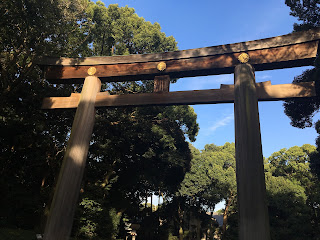Time for a bit of Japanese history!
For as long as Japan has been recording history, they have had the exact same family in the emperor's position. However, the emperor wasn't always the real ruler of the country.
Think of Medieval European society: you had the kings, but you also had knights. Knights could be nobles, high to low. The lower knights would pledge their service to a higher knight, and those higher knights would pledge their service to someone higher, and so on until a knight finally pledged loyalty to a king.
Japan's Samurai were very similar to the European knights.There were lower-level Samurai and higher-level Samurai (daimyo). The highest Samurai was called the Shogun.
For a long time in Japanese history, the Emperor was there as fulfilling a ceremonial role (remember that the Japanese considered the imperial family to be part divine), but the Shogun was the real ruler of Japan.
That all changed in 1868 when the 15-year-old Meiji declared he wanted Japan to be industrialized and end Japan's isolation. The Shogun didn't agree with Meiji, but in the end, he formally stepped aside and allowed Meiji to take complete control of the government. As Emperor, Meiji opened up many new options for trade with Japan. He also adopted many western habits (for example, see this picture), such as western clothing, western food, and western wine. Many of the changes he made propelled Japan from a medieval-style country to an industrialized country in an incredibly short time. Basically, because of Meiji's reforms, the Japanese army was powerful to defeat Russia in 1905, and then to take part in WWII in the 1930's and 40's (and we all know how that ended).
Meiji's reforms made him very popular with the people in Japan (not the former Samurai, obviously, but many of the common people). According to some of the tour guides around Tokyo (I think at the Samurai Museum...), the Meiji Shrine was paid for entirely by donations.
 |
| Here's the entrance. |
 |
| It's Japan, so of course I had to include a picture with sunflare |
 |
| The entrance to the shrine proper |
 |
| More pretty woodwork |
 |
| Looking back at the square from the shrine. |
I was debating whether to include the next pictures or not, but oh well...
The first picture shows the barrels of French wine sent to the shrine. These are donated by Burgundy wineries every year. This is a reference to Meiji's embracing western and foreign ideas.
These barrels are Japanese sake (SAH-kay, not sake). These are dedicated to Shinto gods.
 |
| Pretty bridge |
Meiji Shrine is probably my favorite shrine. It was so peaceful and quiet, with such lovely trees. Definitely a must-see if you are in Tokyo!










No comments:
Post a Comment